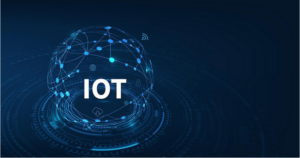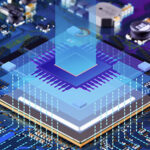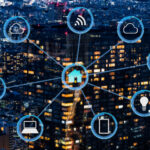The Internet of things (IoT), which includes the billions of devices now connected to the internet, has developed substantially over the past few years. IoT has become integral to several technologies and businesses. In fact, the number of active IoT devices has increased from 11.28 billion to 13.14 billion between 2021 and 2022. And the number of active IoT devices is expected to surpass 29 billion by 2030.
Interestingly, the growth in IoT has been consistent despite the pandemic and geopolitical challenges. Today’s Internet of things has progressed into a refined and processed AI-powered analytical solution that can provide extremely useful data. It offers improved operational efficiency and data-driven insights for quick decision-making — which is saving time, costs, and provides better user experiences for many.
Until recently, R&D for the IoT focused on developing more efficient internet protocols enabling connected devices to work and communicate more effectively over a low bandwidth while using limited computing resources. Several internet messaging protocols now work well with different IoT scenarios.
This year, expect the IoT-related research to focus on new aspects of technology, including security, regulation, and edge computing.
Security
Cyber security is a significant concern in the deployment of connected devices. Microcontrollers power many of these devices and, unfortunately, installing cyber security software on the controller firmware is impossible.
Although IoT protocols are based on reliable serial communication, the possibility of data breaches, device hacking, and cyber-attacks are still potential threats. One reason is that IoT devices are closely connected, so if one is at risk, all of the devices in a network are at risk.
There’s also a concern of outdated software, software flaws, and device mismanagement, typically managed by the Over The Air (OTA) updates. To reduce the chance of malware, ransomware, DDoS attacks, and data leaks or breaches, cyber-security software must be installed at the hub or on the cloud platform responsible for communication between the connected devices.
Expect greater investment into cyber-security software and customized security measures. Many countries are in the process of enforcing standards and regulations concerning IoT devices. The industrial standardization of connected devices will also further strengthen IoT security.
While cyber security software and credential management solutions check unauthorized access to devices, network security tools are useful in ensuring network security with the help of connected devices’ firewall, VPN access, and Identity and Access Management (IAM).
Regulations
The security of the Internet of Things has been discussed since its inception. The first regulation adopted for IoT security was released in California in 2018. It emphasized the adoption of unique credentials for device access. Similar laws and standards are either under development or already enforced in other parts of the world.
For example, the UK passed one regulation in 2022, the Product Security and Telecommunications Infrastructure (PST) bill. Much like the California regulation, this document enforces setting unique login credentials for IoT devices and obliges manufacturers and vendors to inform consumers of security updates.
The European Union is currently strategizing a similar law that, once enforced, is expected to impact the lifecycle of IoT products. China has its own standards, and other countries are slowly following suit.
Edge and fog computing
IoT platforms and services have been the backbone of the Internet of Things. IoT devices generate enormous amounts of raw data. Essentially, this data is only useful once processed to draw relevant insights.
Typically, big data analytics is done by an AI-powered solution on the server. But processing data over a cloud platform has drawbacks. IoT devices use messaging protocols that communicate data using a low-bandwidth network connection. However, it’s not uncommon for data communication to experience high latency, which can lead to failure in real-time applications.
Since these devices fully depend on network connectivity to function, embedded engineers focus on edge computing. This is where data collected by an IoT device is processed locally. Processing can also include implementing simple machine-learning tasks or artificial neural networks — which require installing additional storage such as an SD card, external flash memory, or EEPROM (for storing sensor data or pre-built databases).
Sometimes edge computing does not provide a comprehensive solution due to resource constraints. In such applications, engineers resort to fog computing. Fog nodes are IoT gateways or LAN networks situated closer to the IoT network. The IoT devices are connected to the fog node through a reliable wireless solution or a LAN within a small range.
The node is a highly capable computer process that collects data via sensors and manages the connected devices together. Any latency issues are generally resolved because of the network’s proximity to the IoT devices.
Digital twins
A digital twin is a virtual prototype of a product or device. Manufacturers are using digital twins for product testing and virtual simulation of business models without putting real-world assets to risk.
IoT devices will play a key role in the virtual simulation and testing of products through digital twins. Also, digital twins will be useful for testing IoT-related devices and cyber security before production.
The Metaverse technology is based on digital twins and envisions a digital replication of the real world, where people can interact with one other and conduct real-life activities like shopping, studying, gaming, working, etc. The IoT devices will be crucial for implementing the Metaverse.
Final thoughts
When the Internet of things initially launched, the primary concern was reliable connectivity and machine-to-machine communication. For the most part, these concerns have been resolved, thanks to serial or device-to-peripheral communication.
Today, several well-established internet protocols can be used for network communication between IoT products and cloud platforms that operate on low bandwidth and require minimal computing resources. The cloud provides a platform for visualization, analysis, and the proper processing of raw data collected from billions of IoT devices.
Now the concern is about security. The development and enforcement of regulations for IoT products and networks might soon demand universal standards. There are now many security measures expected of device manufacturers and system engineers. Some important security measures include unique device access credentials, OTA updates, token-based device-to-device and device-to-server communication, firewall and cyber security software application at IoT gateways, and network security tools.
New trends also indicate a shift from IoT platforms to edge and fog computing. IoT networks of the future will likely be self-sufficient local networks with high security and data confidentiality. It will be interesting to see how IoT devices change in the future.
You may also like:
Filed Under: IoT applications, IoT tutorials, Tech Articles, Tutorials









Questions related to this article?
👉Ask and discuss on EDAboard.com and Electro-Tech-Online.com forums.
Tell Us What You Think!!
You must be logged in to post a comment.